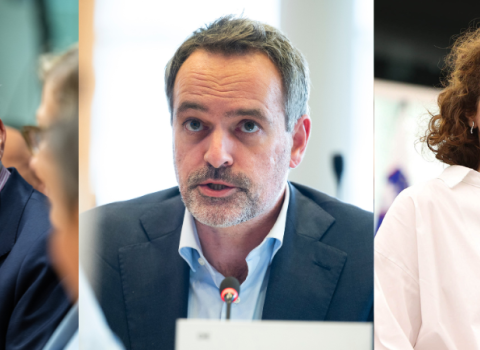The SOLUS Project, coordinated by the Politecnico di Milano, has come to a close with the creation of an innovative multimodal tomographic imaging system for improving breast cancer diagnosis.
The system, developed to discriminate noninvasively between malignant and benign lesions, is currently in the clinical validation phase at the San Raffaele Hospital. The validation will last two years, but initial results will be already available in the next months.
Breast cancer is the most common type of tumor and an early diagnosis is essential to giving women a higher a chance of survival. Screening programs are effective, but they have a high rate of false positives.
SOLUS - Smart Optical and Ultrasound Diagnostics for Breast Cancer - offers a solution to this problem, combining ultrasound imaging (ultrasound and elastography) and diffuse optical tomography in a single probe, thus making it possible to simultaneously evaluate the morphology, stiffness, and composition of the tissues and the blood parameters.
The development of the SOLUS imaging system required significant advancements in the field of photonics (picosecond pulsed laser, highly sensitive time domain detectors, dedicated acquisition electronics), also leading to the development of the “Smart Optode”, a key element of the multimodal imaging system that is, however, also available as an independent device for diffuse optical spectroscopy in the time domain, which combines very compact dimensions (few cm3) with state of the art features and has potential applications in the medical field and beyond: from monitoring of physical rehabilitation and athletic training activities, to the nondestructive evaluation of fruit in the field or timber.
The Horizon 2020 SOLUS project was coordinated by Professor Paola Taroni of our Physics Department, and brings together 9 partners from 5 European countries, with expertise in the photonics, electronics, and medical imaging sectors: 2 universities (Politecnico di Milano and University College London), 1 research centre (CEA-LETI Grenoble), 4 companies (Vermon, Hologic Supersonic Imagine, Micro Photon Devices, iC-Haus), 1 hospital (San Raffaele Hospital), and EIBIR-European Institute for Biomedical Imaging Research, which connects medical imaging societies at the European level.
The whole consortium is grateful to the European Commission and to the European Technology Platform Photonics21, which supported the project making its developments possible.
This article was first published on 15 December by Politecnico di Milano.





 A unique international forum for public research organisations and companies to connect their external engagement with strategic interests around their R&D system.
A unique international forum for public research organisations and companies to connect their external engagement with strategic interests around their R&D system.